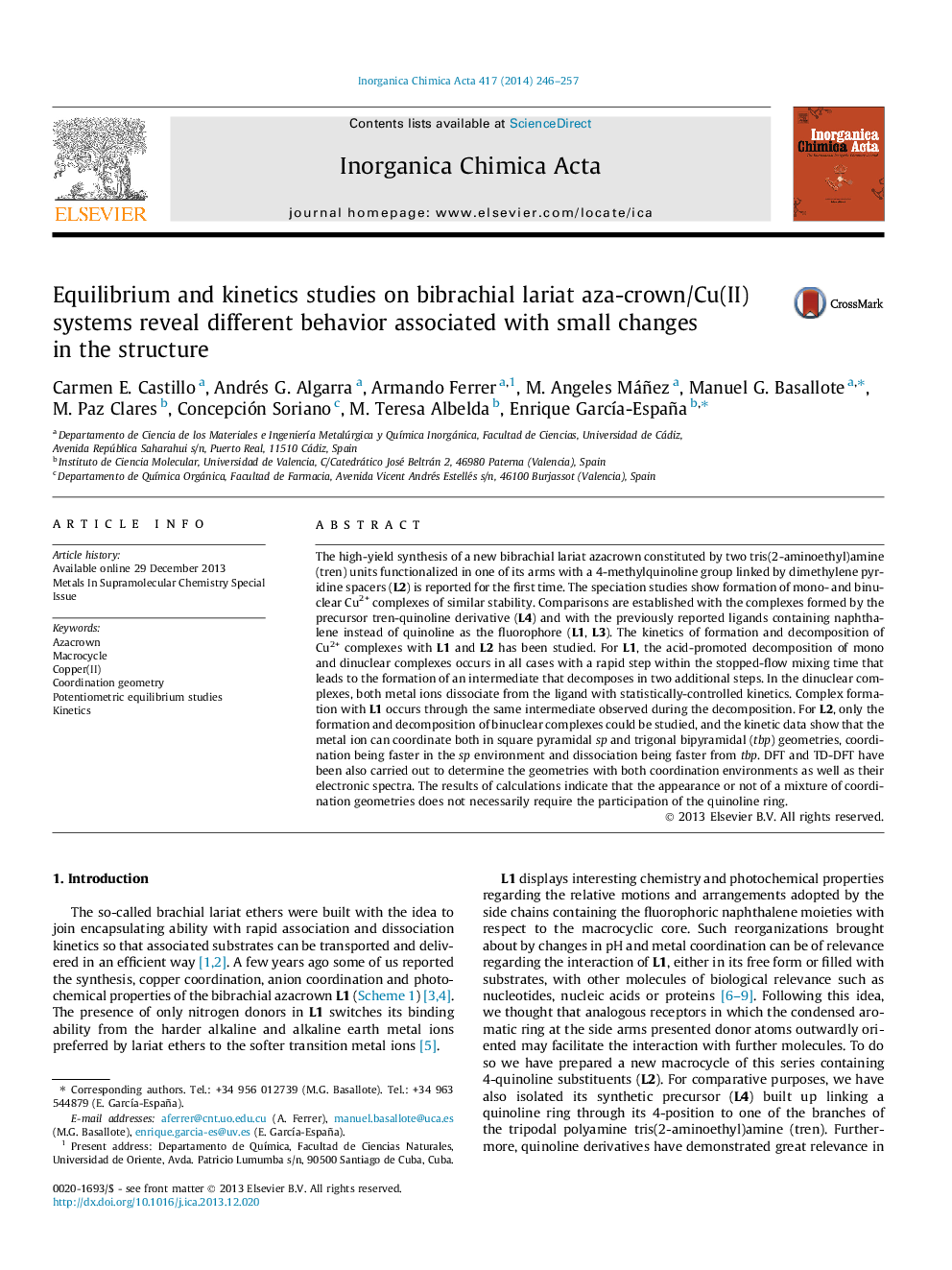| کد مقاله | کد نشریه | سال انتشار | مقاله انگلیسی | نسخه تمام متن |
|---|---|---|---|---|
| 1312196 | 1499171 | 2014 | 12 صفحه PDF | دانلود رایگان |

• A new bibrachial azacrown receptor containing 4-quinoline substituents has been prepared.
• Equilibrium studies on ligand protonation and Cu2+ complex formation are reported for this ligand.
• The kinetics of Cu2+ complex formation and decomposition has been studied.
• Equilibrium and kinetics are compared with those of the related ligand lacking of quinoline.
The high-yield synthesis of a new bibrachial lariat azacrown constituted by two tris(2-aminoethyl)amine (tren) units functionalized in one of its arms with a 4-methylquinoline group linked by dimethylene pyridine spacers (L2) is reported for the first time. The speciation studies show formation of mono- and binuclear Cu2+ complexes of similar stability. Comparisons are established with the complexes formed by the precursor tren-quinoline derivative (L4) and with the previously reported ligands containing naphthalene instead of quinoline as the fluorophore (L1, L3). The kinetics of formation and decomposition of Cu2+ complexes with L1 and L2 has been studied. For L1, the acid-promoted decomposition of mono and dinuclear complexes occurs in all cases with a rapid step within the stopped-flow mixing time that leads to the formation of an intermediate that decomposes in two additional steps. In the dinuclear complexes, both metal ions dissociate from the ligand with statistically-controlled kinetics. Complex formation with L1 occurs through the same intermediate observed during the decomposition. For L2, only the formation and decomposition of binuclear complexes could be studied, and the kinetic data show that the metal ion can coordinate both in square pyramidal sp and trigonal bipyramidal (tbp) geometries, coordination being faster in the sp environment and dissociation being faster from tbp. DFT and TD-DFT have been also carried out to determine the geometries with both coordination environments as well as their electronic spectra. The results of calculations indicate that the appearance or not of a mixture of coordination geometries does not necessarily require the participation of the quinoline ring.
Equilibrium, kinetic and DFT information allows a discussion on the effect that the presence of an heteroatom in the aromatic unit at the pendant arm has on molecular reorganization and Cu2+coordination with bibrachial lariat azacrown receptors.Figure optionsDownload as PowerPoint slide
Journal: Inorganica Chimica Acta - Volume 417, 1 June 2014, Pages 246–257